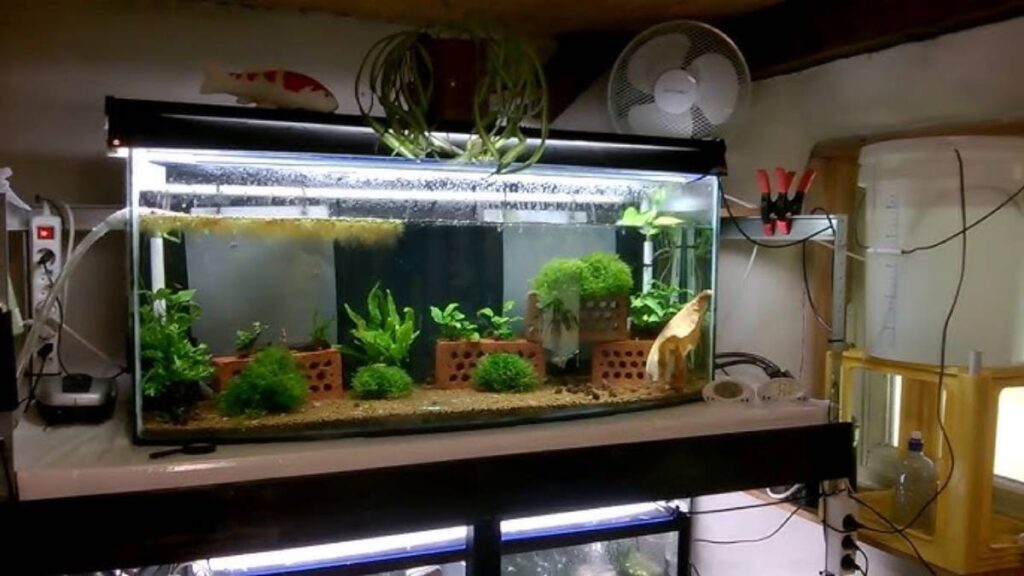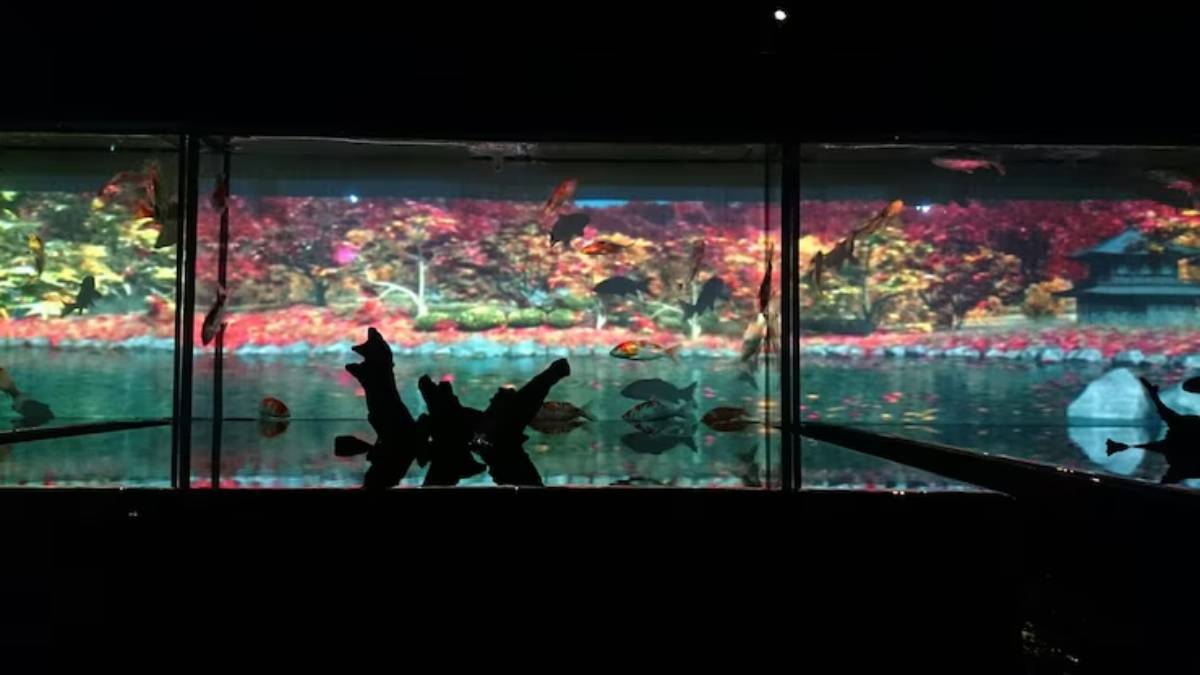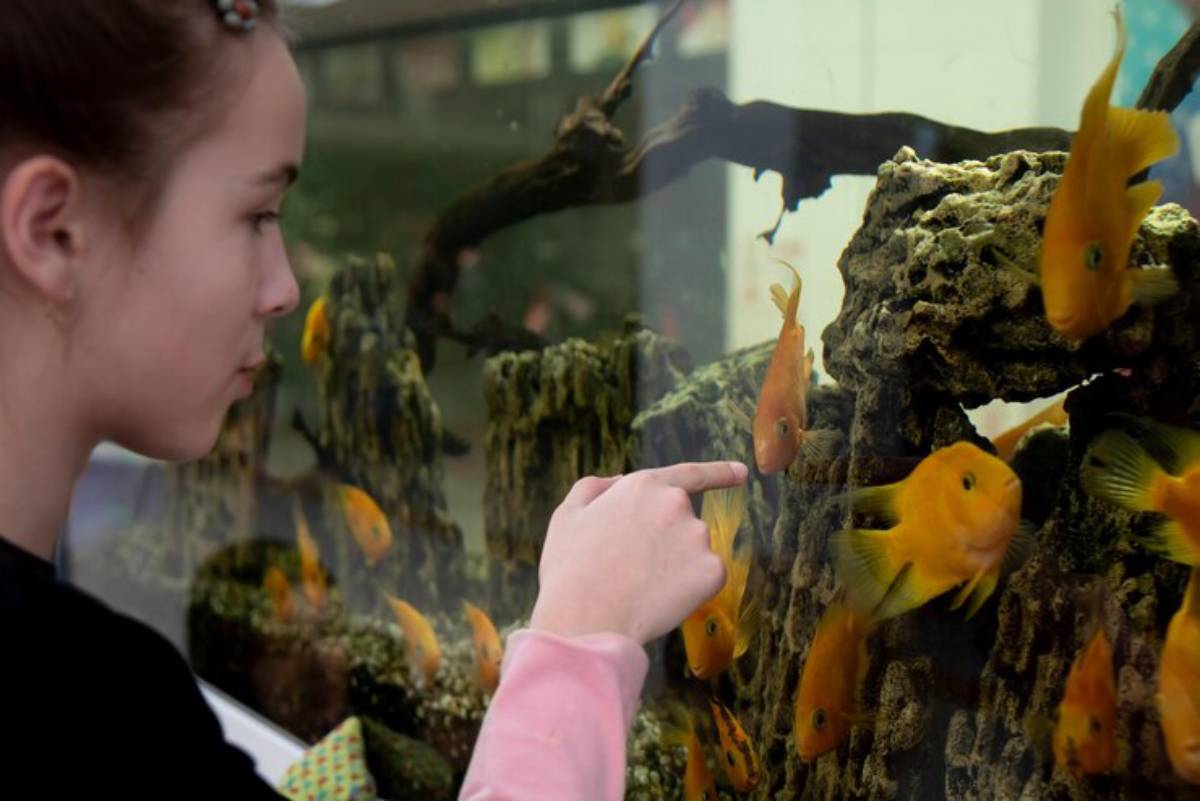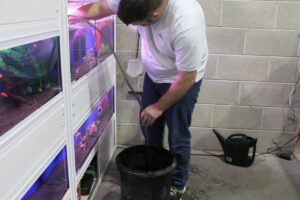The Pets Care Blog

How to Prevent Overheating in Aquariums
Warm weather is a blessing — unless you’re a fish trapped in an aquarium with no means to escape rising water temperatures. Unlike rivers or oceans, where fish can swim to cooler depths, home tanks are closed systems. That means when things heat up, your fish suffer the consequences.
Overheating is more than just uncomfortable. For many species, especially those sensitive to change, it can lead to stress, oxygen depletion, and even death. With summers becoming hotter and more unpredictable, understanding how to prevent your fish tank from getting too hot is more important than ever.
In this guide, you’ll learn the risks of high tank temperatures, how to recognise the signs, and the best aquarium heat prevention methods to keep your underwater pets healthy, happy, and cool.
Why High Temperatures Are Dangerous for Fish
Fish, being cold-blooded, can’t regulate their internal temperature. They rely entirely on their environment, and when that environment gets too hot, the consequences can be swift and severe.
Effects of Overheating on Fish:
- Reduced oxygen levels in the water
- Increased metabolism, causing stress
- Weakened immune systems
- Lethargy or hyperactivity
- Increased susceptibility to disease
- Ammonia toxicity due to faster waste breakdown
For many tropical fish, the safe temperature range is 24–27°C (75–81°F). Once water exceeds 30°C (86°F), even heat-tolerant species start to struggle.
Signs Your Aquarium Is Overheating
It’s not always obvious when your tank is too warm, especially if your fish don’t show clear distress at first.
Warning Signs:
- Fish gasping near the surface
- Increased gill movement
- Lethargy or erratic swimming
- Plants looking wilted or decaying
- Algae bloom acceleration
- Thermometer consistently above the optimal range
Don’t wait for symptoms to appear — prevention is much easier than damage control.
Causes of Excess Heat in Fish Tanks
To prevent overheating, you need to understand where the heat is coming from.
Common Heat Sources:
- Direct sunlight hitting the tank
- Room temperatures above 27°C
- Strong aquarium lighting, especially halogen or metal halide
- Overpowered heaters or broken thermostats
- Lack of airflow or a tank cover trapping heat
Addressing these causes is key to cooling your aquarium sustainably.
Cooling Fish Tank Tips: Simple and Effective Solutions
Here’s how to take back control of your aquarium’s climate, from quick fixes to longer-term solutions.
1. Relocate the Tank Away from Heat Sources
Move your aquarium away from windows, radiators, and direct sun. Even a few hours of sunlight can raise temperatures significantly.
2. Use a Fan Across the Surface
A small desk fan or clip-on fan directed at the water surface helps evaporate heat. You’d be surprised how effective this is!
3. Float Ice Bottles in the Water
Freeze water in a clean plastic bottle and float it in the tank. Make sure it’s sealed tightly and monitor temperature closely to avoid drastic drops.
Use multiple bottles to swap in and out for smoother cooling.
4. Turn Off or Reduce Lighting

High-intensity lights can heat up a tank. Try reducing the light schedule or switching to low-heat LEDs. If you’re growing plants, this will require balance.
For a full guide to lighting with plant health in mind, explore our beginner-friendly aquarium light guide.
5. Remove the Tank Lid Temporarily
If it’s safe to do so (no jumpers in the tank), removing the lid can help with heat dissipation. Ensure pets or children can’t access the tank.
6. Increase Surface Agitation
Use air stones, sponge filters, or position the outflow near the surface. This increases oxygen exchange, vital when warm water holds less oxygen.
Longer-Term Heat Management Options
If you live in a warm climate or heatwaves are becoming more common, consider these more permanent solutions.
1. Install an Aquarium Chiller
These are specialised devices that cool the water mechanically. They’re reliable but often expensive — best for large tanks or sensitive species.
2. Use Temperature Controllers
External digital thermostats can control both heaters and fans. They offer far more precision than built-in dials and add a layer of protection.
3. Swap to Cooler Light Sources
Replace outdated lighting with LEDs designed for aquariums. They emit far less heat and are energy-efficient.
4. Add Insulation
Ironically, insulating your tank can help during both winter and summer by preventing rapid environmental influence. Try foam backing or insulating panels.
5. Choose Fish That Tolerate Warmer Water
If high temperatures are the norm in your home, stock your tank with species that are more heat-tolerant. Research carefully, though — even warm-loving fish need oxygen-rich, stable water.
Best Practice: Monitor with a Digital Thermometer
Reliable temperature tracking is essential for prevention. Choose a digital thermometer with an external probe for accuracy. Set temperature alerts if available.
Check temperatures daily, especially during heat waves or power outages.
How to Act During a Heat Emergency
If your tank temperature spikes suddenly — say, during a summer heatwave or blackout — quick action can make a life-saving difference.
Emergency Cooling Checklist:

- Monitor fish behaviour and water temperature every 30 minutes
- Turn off heaters immediately
- Float sealed ice bottles or zip bags of ice
- Increase aeration (air stone or battery-powered pump)
- Remove the tank lid
- Dim or turn off the lights
- Add a fan blowing across the surface
Avoid sudden changes — aim to reduce temperature gradually (1–2°C per hour at most).
Preventing Overheating in Small or Nano Tanks
Smaller volumes of water heat up faster and cool down just as quickly. If you’re keeping nano tanks.
- Avoid bright or hot lighting
- Place in cooler parts of your home
- Use passive cooling like mesh lids and fans
- Check the temperature twice daily during summer
Because small tanks are more volatile, simple changes can have dramatic effects.
Don’t Forget the Impact on Plants and Invertebrates
High temperatures don’t just affect fish — plants can melt, and shrimp or snails may become distressed.
At Risk:
- Mosses and ferns (e.g., Java moss) may brown or rot
- Cherry shrimp may become sluggish or stop breeding
- Mystery snails may close up or suffer shell damage
If you’re building a planted tank in a warm environment, consider low-maintenance, heat-tolerant plant species. Get inspired with our guide on choosing plants for a low-maintenance tank.
Conclusion: Keep Cool and Fish On
Preventing overheating isn’t just about comfort — it’s about safeguarding the health of your aquatic pets. As the climate continues to shift and indoor temperatures rise, aquarists must adapt.
Whether you’re using fans, chillers, or smart placement, the key is to stay vigilant and act early. Combine daily monitoring with proven cooling techniques, and your tank will remain a safe, vibrant space no matter what the weather throws your way.
So, take five minutes today to check your tank temperature. If it’s inching too high, put these tips to work. A cooler tank is a healthier tank, and your fish will thank you with brighter colours and peaceful swimming.









